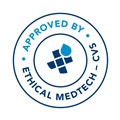Debora Maria Befi-Lopes
University of Sao Paulo
Brazil
Title: Specific language impairment and auditory processing disorder: Insights from speech-ABR
Biography
Biography: Debora Maria Befi-Lopes
Abstract
To evaluate neural mechanisms encoding speech sounds through Speech-ABR in APD and SLI children. Specifically, literature describes temporal processing abnormalities in SLI, so we hypothesized that SLI and APD would demonstrate greater perceptual deficits in neural encoding of speech sounds in subcortical auditory pathways in response to rapidly speech. Speech-ABR was tested in 57 children, 6-12 years old (three groups), TD (n=18; mean 109, 83 months), APD (n=18; mean 110, 00 months) and SLI (n=21; mean 96, 00 months). All children presented normal peripheral hearing bilaterally. Speech-ABRs were elicited using fiveformant syllable/da/(BioMARK). Based on these characteristics of Speech-ABR response, 3 dimensions were defined for analysis: Timing, harmonics and pitch. ANOVA test was applied (significance level 0.05). Timing of onset response to /da/ showed statistical differences between groups with APD and SLI, showing greater latency of “A” peak than TD (p=0.009 and p=0.002, respectively). For C, E, F and O peaks, only SLI group showed a statistically significantly increase in latency when compared to TD [E, O=p<0.05; C, F=p<0.01]. Furthermore, we observed discrete latency increase for SLI when compared to APD group with difference for E and F peaks [p<0.05]. For pitch and harmonic encoding, there were no group differences in amplitude of spectral component F0 and F1. In contrast, there was difference in encoding of HF among the response to TD and SLI (p=0.01) as well as APD and SLI (p=0.05). TD and APD exhibited greater amplitudes when compared with SLI. We concluded abnormal encoding for specific acoustic features that are characteristic of speech for children with APD and SLI. The hypothesize that abnormal speech-ABR should manifest itself in difficulties in speech perception was confirmed. However, SLI exhibited worst results when compared with APD and TD suggesting worst representation of crucial components of speech sounds could contribute to difficulties.

